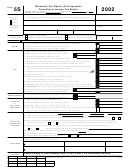Publication 102 - Wisconsin Tax Treatment Of Tax-Option (S) Corporations And Their Shareholders Page 10
ADVERTISEMENT
Publication 102
B. Adopting an Accounting Method
tions, interest expenses on investments, expenses for
the production of income, section 179 deductions,
and items used in figuring depletion on oil and gas
For Wisconsin purposes, a tax-option (S) corporation must
properties.
use the same method of accounting used for federal purposes.
Any change in accounting method made for federal purposes
b. Certain items may be deductible by an individual,
must also be made for Wisconsin. However, if the accounting
but not by an S corporation, including personal
method used federally isn’t authorized under the Internal
exemptions, certain taxes paid or accrued to foreign
Revenue Code in effect for Wisconsin, the tax-option (S)
countries, charitable contributions, net operating
corporation must use a method authorized under the Internal
loss deductions, and depletion deductions for oil and
Revenue Code in effect for Wisconsin.
gas wells.
Note: A tax-option (S) corporation entitled to use the install-
c. The S corporation may claim the deduction for
ment method of accounting must take the unreported balance
corporate organizational costs.
of gain on installment obligations into income in the taxable
year of their distribution, transfer, or acquisition by another
d. If an S corporation (or any predecessor) was a
person or for the final taxable year for which it files or is
regular (C) corporation for any of the 3 immediately
required to file a Wisconsin franchise or income tax return,
whichever year occurs first.
preceding taxable years, the S corporation is re-
quired to adjust tax preference items as provided in
IRC section 291.
If a corporation has an option under the Internal Revenue
Code that isn’t considered a method of accounting by the
e. A corporation that becomes an S corporation gener-
Internal Revenue Service, the corporation may make a
ally can’t take carryovers from taxable years when it
different election for Wisconsin than that made for federal
was not an S corporation in years when it is an S
purposes. If federal law specifies the manner or time period
in which such an election must be made, those requirements
corporation (see Part VII.D.2 for an exception to this
also apply for Wisconsin purposes. As explained in Part
rule). However, each year the corporation is an S
VII.C.2, a tax-option (S) corporation may make a different
corporation counts as a year for the purpose of
figuring the years to which carryovers can be taken.
election for Wisconsin than that made for federal purposes
with respect to computing depreciation or amortization on
property placed in service during the current taxable year.
2. Additions To and Subtractions From Federal
Income
C. Computing Corporate Income (Loss)
Additions to or subtractions from federal income may be
required for the following items:
As explained in Part III, the Wisconsin tax-option (S)
corporation franchise or income tax law is federalized; that
is, based on the federal Internal Revenue Code.
a. Differences between the federal and Wisconsin
deductions for depreciation or amortization.
1. Computation of Federal Income
For property placed in service in 1997, you may
compute depreciation or amortization under the same
For federal purposes, the taxable income of an S corpora-
method as for federal purposes. Otherwise, compute
tion generally is computed like the taxable income of an
depreciation or amortization under the Internal Reve-
individual with the following differences.
nue Code as amended to December 31, 1996, for
property placed in service before August 6, 1997.
a. Any items of income (including tax-exempt in-
Compute depreciation or amortization under the
come), loss, or deduction, the separate treatment of
Internal Revenue Code as amended to August 5, 1997,
which could affect the tax liability of any share-
for property placed in service on or after August 6,
holder must be separately stated and passed through
1997.
to the shareholder. Items which must be separately
stated include short- and long-term capital gains and
An asset placed in service before 1997 must con-
losses, gains and losses from dispositions of prop-
tinue to be depreciated or amortized under the
erty used in a trade or business, interest income,
method allowable for Wisconsin purposes for the
dividend income, royalty income, rental income and
year in which it was placed in service. Many differ-
expenses, tax-exempt income, charitable contribu-
ences in Wisconsin and federal depreciation and
8
ADVERTISEMENT
0 votes
Related Articles
Related forms
Related Categories
Parent category: Financial
 1
1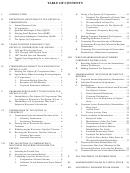 2
2 3
3 4
4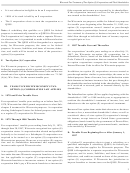 5
5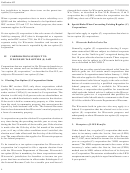 6
6 7
7 8
8 9
9 10
10 11
11 12
12 13
13 14
14 15
15 16
16 17
17 18
18 19
19 20
20 21
21 22
22 23
23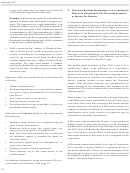 24
24 25
25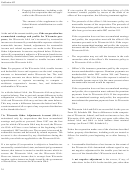 26
26 27
27 28
28 29
29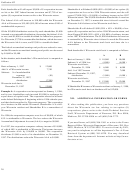 30
30




